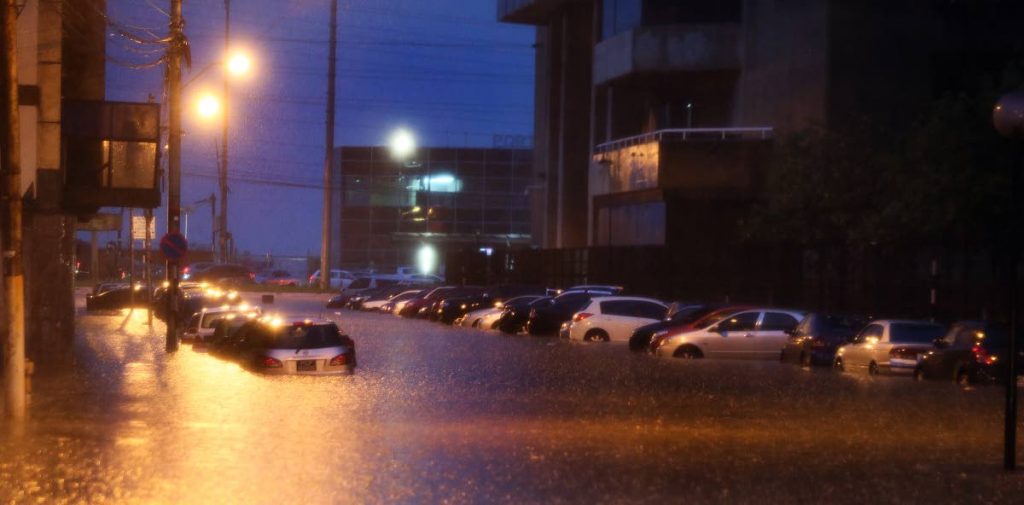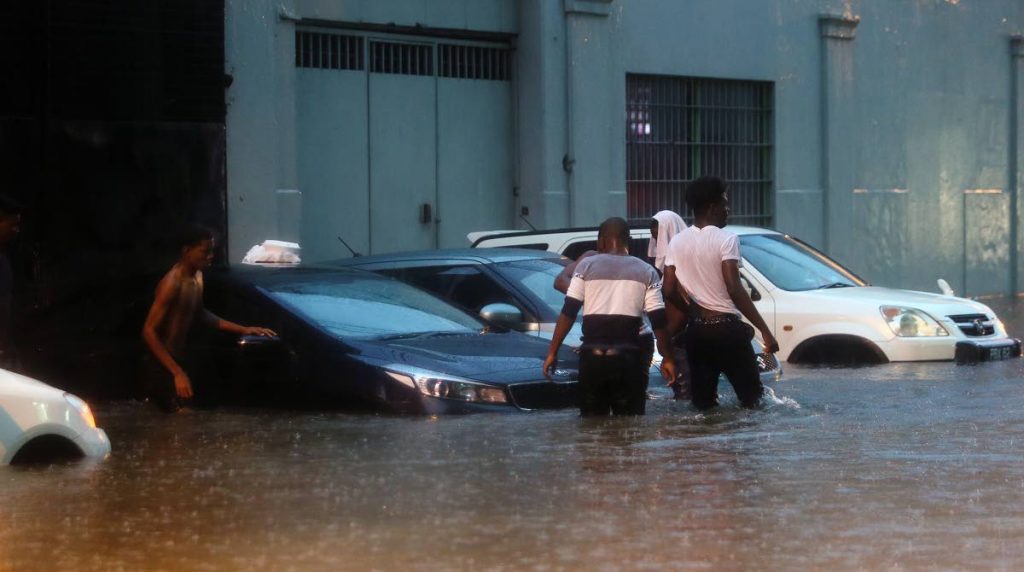And the rains came

THE rainy season in Trinidad and Tobago has started and I have found that it unfolds in the same way as Jamaica’s. What made it a little frightening is that it lasts for more than half the year in TT – generally beginning in May, and ending in November.
In Jamaica, our two main periods for consistent rainfall are in May, and September or October to November. For the past few years we have seen even dry hurricane seasons.
I thought to myself, “Jamaica would probably sink if our rainy season went for half the year. From all the stoves, fridges and cars in our gullies – we would all surely die.”
Coming to TT, I discovered Jamaica was not alone: TT stands side by side with Jamaica, with both countries clearly struggling to remedy what seems a culturally entrenched set of bad habits and attitudes to do with the disposal of waste.

PHOTO BY AZLAN MOHAMMED
After just about five consecutive hours of moderate and heavy rainfall last Sunday, the streets of Port of Spain and surrounding areas were transformed into rivers and lakes. What I saw in videos and photos shared over social media resembled any scene from a flooded New Kingston. St Vincent Street, around Central Bank, reminded me so much of what happens in front of The Atrium on Trafalgar Road, Kingston, after a few hours of rain.
It came as a surprise to me, because I did not imagine a country with more resources than Jamaica having to informally declare a temporary city lockdown in response to weather conditions that are synonymous with living in the Caribbean. But then again, the move from Jamaica to TT keeps me reminded that “the Caribbean is the Caribbean is the Caribbean” – good and bad.

Since being here I have heard repeated conversations on the issue of flooding, and how little is done to prepare for the rainy season. In spite of that, I did not notice any robust campaign in TT to help address the issue of waste disposal, particularly plastic – which is the main cause of flooding.
After the first few weeks in TT, I remember asking, “Do Trinis recycle?” I could not recall having seen a separate bin for plastic anywhere. After drinking beers at a bar on D' Avenue, I was told not much emphasis is placed on how glass bottles are disposed of – so I just threw it in a regular bin. In Jamaica, it had almost become a cultural practice for beer bottles to be collected by bar owners.
In Jamaica, for a number of years, I would have seen campaigns urging citizens to separate waste, and the concept of “reduce, reuse, and recycle”’ was widely promoted. Which makes perfect sense, since a 2018 report by the Recycling Partners of Jamaica showed that Jamaicans have been using approximately 600 million plastic bottles a year.
In spite of this, I had to ask myself: are the leaders of these countries really doing as much as they can to remedy an issue that has affected the region year after year for decades? Is there more that citizens can do?
There are non-government organisations leading these clean-up and recycle campaigns in both Jamaica and TT. These bodies are working tirelessly to help save our environment, but can more be done?
As global warming intensifies and sea levels rise, I would imagine it important for us in the Caribbean to give more attention to what could probably determine our very existence for another 300 years, at least.
Did ancient Egyptians and Mayans really manage to mechanise better drainage systems than those “maintained” by modern people of the Caribbean in 2018?
Is it a case where these ancient people just had less waste material clogging their gullies and underground waterways?
I also wondered if it is a case where we need to re-engineer our waterways. Maybe having them cleaned would make a difference, but that may not be enough.
After my first sight of a flooded Port of Spain that Sunday night, I walked through the city the following morning. Everything was looking normal – minus the stores that delayed opening, workers gathered by the doors of stores along Frederick Street until mopping-up was complete.
Otherwise, just like in Kingston, it was back to business as usual. At least until the streets required boats and dinghies again–for movement or even survival.


Comments
"And the rains came"